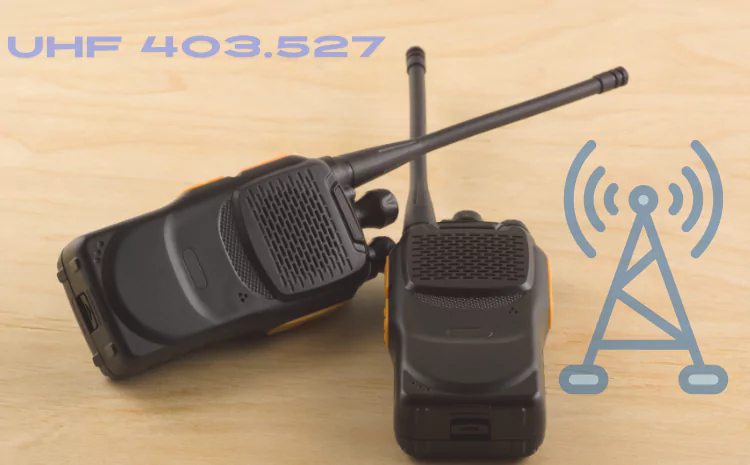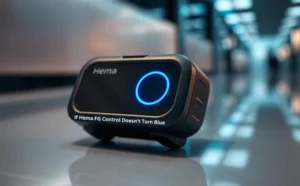In today’s world of rapid communication, frequency bands play a vital role in ensuring seamless connections, especially in high-demand industries. One of the significant frequencies utilized is UHF 403.527 MHz. While this might seem like just another number, the importance of this particular frequency cannot be overstated. From secure communication to widespread use in industry, this frequency helps keep critical operations running smoothly.
What is UHF (Ultra High Frequency)?
UHF (Ultra High Frequency) is a band of radio frequencies that spans from 300 MHz to 3 GHz. Frequencies in this range are widely used for television broadcasting, satellite communication, and especially in two-way radio communications, making them crucial for sectors like emergency services, public safety, and industrial operations.
Common Uses of UHF
UHF frequencies have various applications:
- Communication systems: Two-way radios, walkie-talkies, and other short-range communication devices depend on UHF for clear signals.
- Television broadcasting: TV channels operate in the UHF range to provide high-quality audio and video.
- Satellite communications: UHF plays a significant role in ensuring consistent satellite transmissions and reception.
The Specific Frequency: UHF 403.527
When we talk about UHF 403.527, we’re zeroing in on a precise point in the UHF spectrum. This frequency is often utilized for professional and industrial communications due to its reliability and range.
UHF 403.527 in Communication Systems
UHF 403.527 MHz has specific applications in industries where constant and secure communication is crucial. Whether it’s for:
- Two-way radios: Widely used by security, law enforcement, and transportation.
- Industrial applications: Factories and warehouses utilize this frequency to coordinate operations.
- Emergency services: Police, fire departments, and other first responders rely on this frequency to ensure uninterrupted communication during critical situations.
Licensing and Regulation of UHF 403.527
UHF 403.527 MHz, like most other frequencies, is regulated by government agencies to prevent overcrowding and interference. Depending on your region, you might need a license to operate equipment on this frequency.
Benefits of UHF 403.527
Range and Signal Penetration
One of the standout features of UHF frequencies is their ability to penetrate obstacles, making them ideal for urban environments. Buildings, trees, and other structures don’t interfere as much with UHF signals compared to other frequency bands.
Reliability and Security
Another reason UHF 403.527 is highly favored is due to its security. In industries where sensitive information is transmitted, this frequency provides a level of encryption that ensures secure communication, reducing the risk of interception.
Comparison of UHF with Other Frequency Bands
VHF vs UHF
While both UHF and VHF (Very High Frequency) are used for communication, there are key differences:
- VHF: Generally offers longer range but struggles with signal penetration through obstacles.
- UHF: Provides better signal clarity in areas with many obstructions, making it better suited for urban environments.
Advantages and Disadvantages of UHF
- Advantages:
- Better signal penetration.
- Secure communication.
- Disadvantages:
- Shorter range compared to VHF.
- Can be prone to interference in some environments.
How to Optimize Use of UHF 403.527?
UHF Antennas and Boosters
To get the best out of UHF 403.527, you need proper equipment. Antennas designed for UHF frequencies can help boost signal strength and range, while boosters can ensure your signal reaches further distances.
Avoiding Interference
It’s essential to operate in environments where there’s minimal interference. Be mindful of other devices using the UHF band to avoid overlapping signals.
Challenges and Limitations of UHF 403.527
Despite its advantages, UHF 403.527 MHz isn’t without challenges. Signal interference can still occur, especially in areas with high traffic on the UHF band. Additionally, geographical limitations can affect the range and reliability of the frequency in certain environments.
Overcoming Barriers to Effective UHF Use
One solution is to invest in high-quality boosters and antennas to mitigate signal issues. Regular maintenance of equipment is also key to ensuring optimal performance.
Future of UHF 403.527 and Communication Technologies
As communication technology evolves, the use of UHF frequencies like 403.527 MHz is expected to become even more integral. With the rise of smart technology and more advanced communication systems, UHF will continue to provide the backbone for secure and reliable communications.
Conclusion
UHF 403.527 MHz plays a critical role in various industries, from emergency services to industrial operations. Its ability to provide secure, reliable, and high-quality communication makes it an indispensable tool. As technology advances, the importance of this frequency will only grow, proving its place in modern communication systems.









